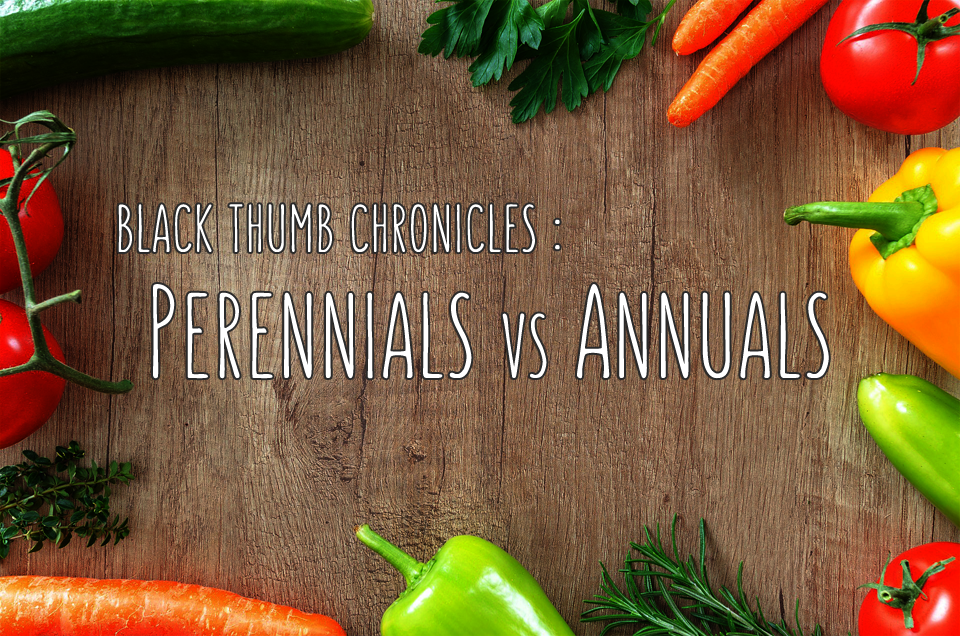
I don't know if you've noticed my pattern throughout this whole process.
There's a few key elements to all my choices. From the bag garden, to the lasagna garden, to companion planting ~ I have opted for, in my opinion anyway, the easiest, black thumb friendly option.
The bag garden allowed me to start my garden now without having to worry about weeds.
The lasagne garden allowed me to reuse all my cardboard, foliage from the clear out and now the grass cuttings
The companion planting, if I did it right, should help attract pollinators, repel pests and enrich the soil for companions reducing the need of intervention from me.
Basically, I'm trying to figure out how to have a self sustaining garden.
This is where perennials and annuals come in.
Perennials vs Annuals
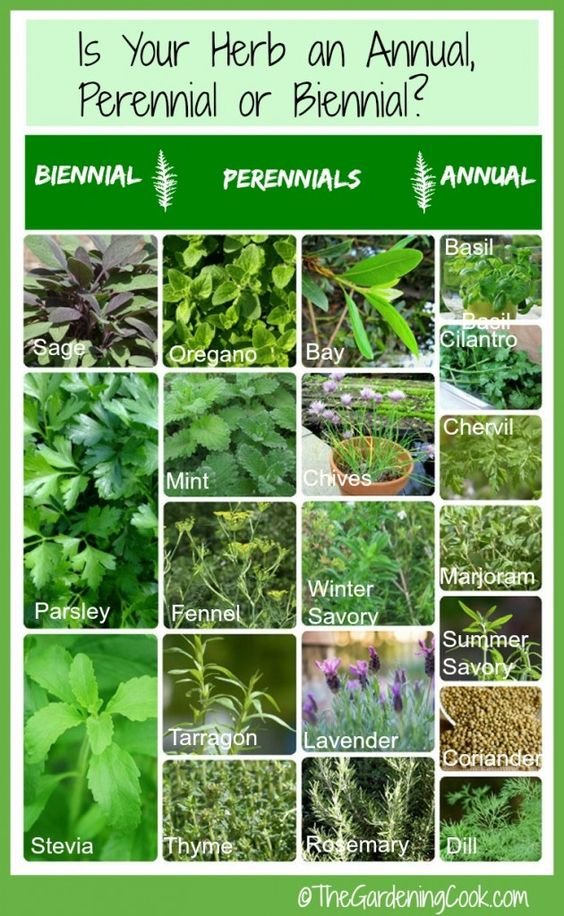
This whole time, I thought once you planted a plant that should be it, it'll be there forever ~ Nope! Apparently some plants do, do that and some you have to grow again from seeds.
Yup. FROM SEEDS.
Say what now?? 😱
Those grow-again-from-seed plants are called Annuals. The plants you plant once, grow for 2 years and keep re-growing all by their sweet self are the Perennials.
Biennials are plants that produce seed and die back in their second year of life.
I decided to compile a list of plants I want for my garden, splitting them into two categories Food and Flowers. Food for obvious reasons and Flowers to encourage pollinators and pest control to come into my garden.
Annual Plants
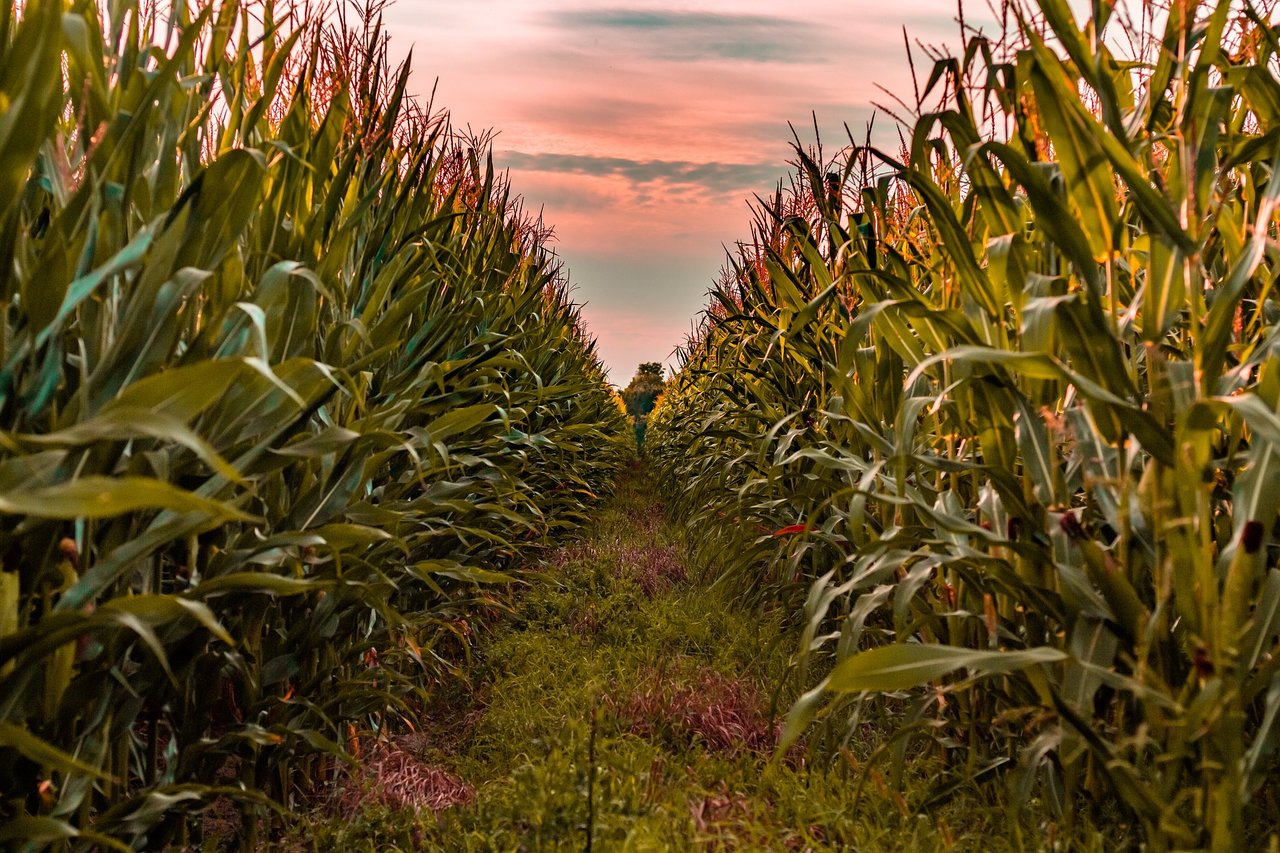
| FOOD | FLOWERS |
|---|---|
| Basil | African Daisy |
| Beans | Alyssum |
| Broccoli | Calendula |
| Corn | Calla |
| Coriander | Chrysanthemum |
| Lettuce | Dahlia |
| Potato | Lillies |
| Spinach | Marigolds |
| Squash | Sunflowers |
PROS..
Produces lots of flowers and blooms longer, often between Spring to Winter. (Because it knows it's only got 1 year to live and it's going hard. Wouldn't you? Well played plant.)
Since they only have 1 year to live they are not assigned a climate zone, which means they will grow the same amount of time in any climate.
CONS..
- To regrow your annual plant you must till the land and replant the seeds every year.
Perennial Plants
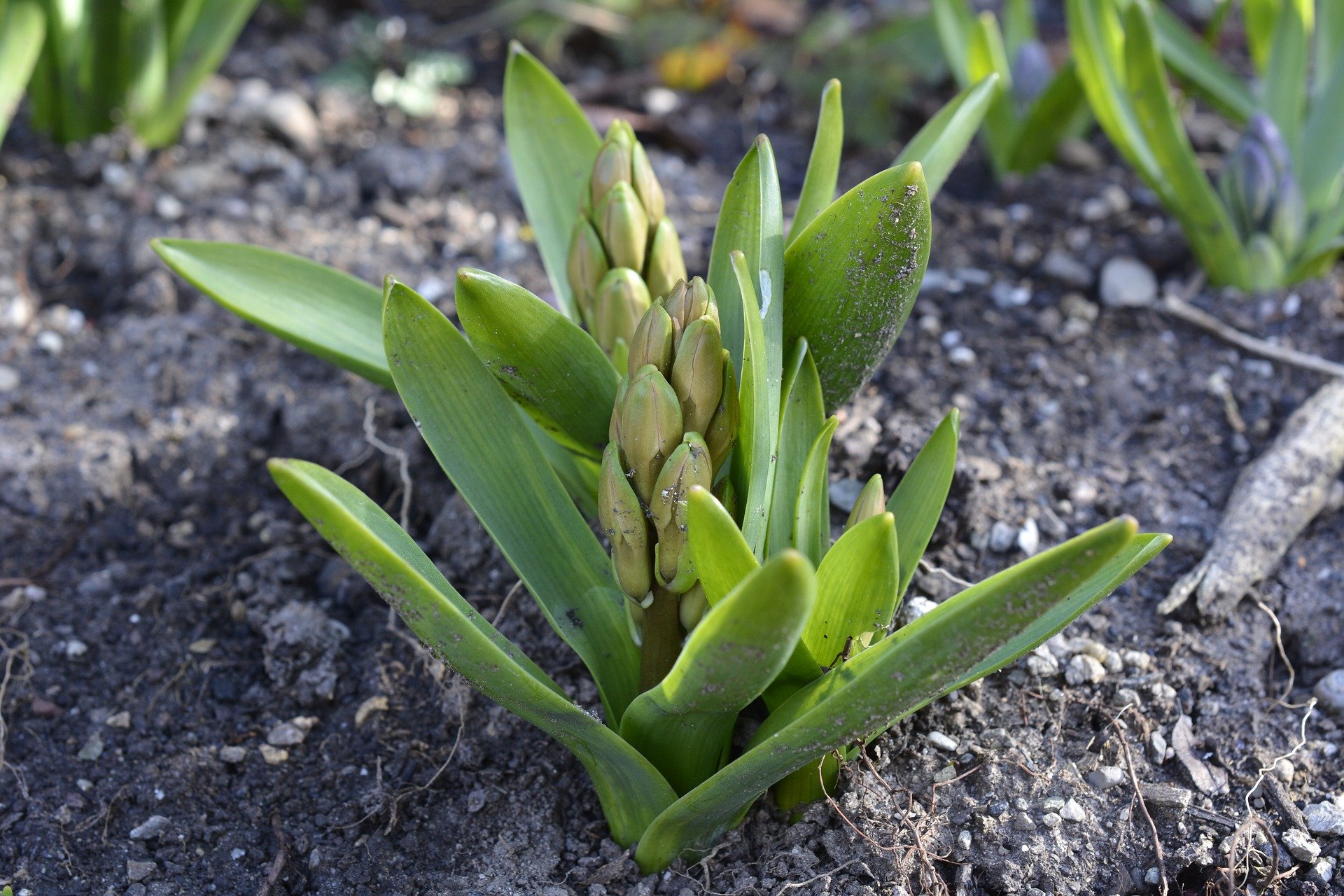
| FOOD | FLOWERS |
|---|---|
| Alfalfa | Aster |
| Avocado | Echinacea |
| Asparagus | Daylily |
| Basil | Hydrangea |
| Broccoli | Peony |
| Chives | Russian Sage |
| Eggplant | Shasta Daisy |
| Garlic | Lavender |
| Kale | Yarrow |
| Kiwi Fruit | Gardenia |
| Mint | Bee Balm |
| Onions | Liatris |
| Peppers | Lumina |
| Plum | Golden Rod |
| Pomegranate | Allium |
| Rhubarb | Phlox |
| Sage | Stonecrop |
PROS..
Once you plant it that's it. It might look like it's dead in winter but it's ok, it'll come back.
No need to harvest the seeds, or pull out the old plant, or till the land.
CONS..
Only flowers for one season as it's focus is to build it's root system.
Might take over your garden
No matter what I will still need to get involved and hands on with the gardening, just because it's a perennial doesn't mean I stop watering or weeding it. Shit still needs to get done, I'm simply trying to reduce the size of my to-do list.
Judging by my wish lists, there's just no getting out of planting annuals, if anything just for the lettuce. There were a couple of plants with conflicting reports like Basil and Potato ~ some sites say they're annuals and some say they're perennials, I still have no idea..
Then there's these plants that grow back.
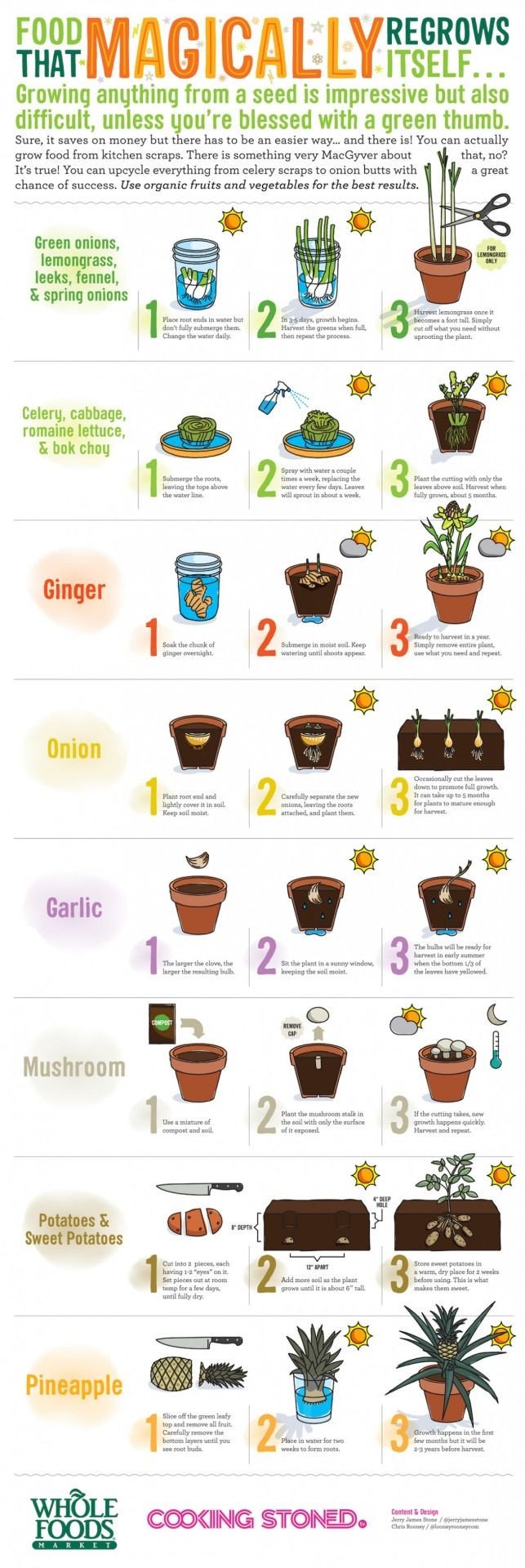
If you harvested these from the ground would they still regrow like it does in the graphic?
And then I read this from permaculturenews.org. If I wasn't sure about having a largely perennial garden before, I am now.
For a minute, forget GMOs, disregard monocultures, and ignore agrochemicals, the majority of the plants we are eating still come from annual outputs. Three annual grains—corn, wheat, and rice—are in the top five of what we produce and consume globally, with potatoes (annual) and sugarcane (misused, water-hogging perennial) rounding out the list. None of these are particularly great for providing the vitamins and minerals our bodies need. Even for those on more of health kick, wanting to include a rainbow of organic fruit and vegetables, there is still a huge dependence on annuals to provide this.
It’s as if—and this is because it was—our diets were designed by the same geniuses whose vast monocultures and agricultural chemicals have put the entire planet on the verge of ecological collapse. And, more negative results are coming in: Those of us in the “first” world, eating industrialized food, are riddled with chronic diseases, like cancer and diabetes. The connections are becoming more and more glaring with each new food documentary, each unearthed scientific study. The woes of the modern diet are being talked about, so it’s time to aim some of this energy into the sources of this food.
Annual vegetables are undoubtedly delicious and often nutritious, and they are easier to purchase than perennial choices (and more and more and more.). But, the fact remains that a diet predominantly based on annual crops—most of our diets, including mine—is not the right choice for several reasons.
Environmentally speaking, they are energy intensive. Most annuals we can buy are grown in an unhealthy way, even when they are organic. They require huge external inputs of fertilizer because the stability of a permanent ecosystem isn’t in place to support the soil and the necessary microorganisms. Also, within the current system, the use of machinery and, thus, petroleum becomes much larger as soils are turned, fertilizers applied, water pumped, and on the familiar list goes.
Ultimately, in terms of health, all of this effort and energy—at least on the industrial scale—seems to produce lesser versions of the vegetables our great-grandparents once enjoyed. The flavor intensity and nutrient content isn’t there anymore because the soil no longer provides all that is needed. Everything becomes dependent on human interference, and this generally comes in the form of what’s cheapest, what’s quickest, and what’s profitable. Basing our diets on what’s inexpensive and convenient is exactly what has weakened our health and the health of planet.
In essence, eating mostly annual plants, especially ones we buy at the supermarket, and even more especially ones from the top five, perpetuates the very system producing so many of our problems. Unfortunately, that system has rigged things against us: Subsidies go to corn and potatoes, not asparagus and Egyptian walking onions, and supermarket shelves are overwhelmingly stocked with corn syrup, soy byproducts, and refined sugar. The way we eat, just as the way we produce food, needs a complete overhaul.
(Full article here. It's awesome, if you're on a journey like me, go on over there and read the whole thing.)
Let that just sink in a bit.
This journey wasn't just about being self sustainable, it was also a journey towards better health, a better life and a better way to live. Although I was aware of GMOs and the geniuses that developed the system we are under, I was not aware of the energy aspect of living on a largely annual diet, nor was I aware of the subsidies for corn, potatoes and soy.
I was in the country side part of Indiana years ago and what I remember of it was pretty much a whole town just full of corn fields. Field after field of corn, EVERYWHERE. I didn't realise then that all those will need to be replanted, I do now and it just blew my mind. That means, instead of having a permanent food forest in those vast locations they have corn instead which requires so much effort. Till the land, plant the seeds, wait months for it to mature, then harvest en masse (cos who's gonna manually harvest hectares worth of corn? ) and then the cycle restarts.
I rarely get on activist mode on here, but just because I don't voice them out don't mean I'm not awake. I'm wide awake and I have been for a long long time. Everything I do, from this gardening journey, to my work with crystals and orgonites, to my work with communities on here, they are all small steps towards regaining our sovereignty.
What are we eating and what does it impact?
Are questions I feel we should all be asking ourselves. I do all the time and I'm constantly finding areas that need work, or things I just need to quit like milk, and corn.
When I think about the situation we are all in I always think of our children as the solution. They are the future and it is up to us to untangle ourselves from the system and show these future generations a better way to be and live by example. We need to pave the way and teach these kids where their food is coming from and at what cost.
I'll be continuing my research to see if I can find recipes that support a perennial diet so I know what I'll need to plant and how much.
Take one step every day, it may not seem like much, but in the end it all adds up.
This is how Black Thumb Chronicles feels like :) In a year's time I will look back at this post, hopefully going, wow, I've come so far .
Thanks for joining me on my journey.
🌻 Arly
Sources: 1, 2, 3, 4, 5, 6, 7, 8, 9, 10
Previously in the Black Thumb Chronicles..
Stage 2 of the lasagna and bursting bag gardens
@bearone/black-thumb-chronicles-stage-2-of-the-lasagna-and-bursting-bag-gardens
Day 12
@bearone/black-thumb-chronicles-day-12
Day 5
@bearone/black-thumb-chronicles-day-5
Weekend Gardening Part 3
@bearone/black-thumb-chronicles-weekend-gardening-part-3
Weekend Gardening Part 2
@bearone/black-thumb-chronicles-weekend-gardening-part-2
Weekend Gardening Part 1
@bearone/black-thumb-chronicles-weekend-gardening-part-1
Permaculture, Food Forests & Tree Guilds
@bearone/black-thumb-chronicles-permaculture-food-forests-and-tree-guilds
Hello Lasagna Bag Garden
@bearone/black-thumb-chronicles-hello-lasagna-bag-garden
Companion and Lasagna Gardening
@bearone/black-thumb-chronicles-companion-and-lasagna-gardening
Reclaiming our views
@bearone/homesteading-reclaiming-our-views
